Hue is a city of ghosts. Ghosts of two fallen dynasties - the Nguyen Dynasty (1802 - 1945) and the Ngo family dynasty that dominated South Vietnamese politics in the late 1950s and early 1960s.
There are also the ghosts of a population scattered by war and the ghosts of foreigners whose blood was spilt here. The Battle of Hue during the Tet Offensive of 1968 was the deadliest of the Vietnam War.
And while the tourist narrative of the city mostly reduces history to disneyesque blandness, spend any time here and you'll get a sense that there's much more to this place than is served up to the average tour group.
This alternative tour takes those with an interest in history to some of the city's less visited and most interesting places. It explores some of the ghosts of Hue.
For more information on each place, click on the link in the title or visit our list of things to do in Hue.
1. Gia Long's Tomb
Gia Long (aka. Nguyen Anh) was the man that created Vietnam's capital in Hue back in 1802. He took his besieged Nguyen clan from humiliating retreat to dominance of the whole country. He's a very important figure in Vietnamese history - but he doesn't enjoy a whole lot of recognition. All the contemporary monuments of Hue from the Citadel to the tombs in the surrounding countryside start with Gia Long's reign. Gia Long united Vietnam in something resembling its contemporary map for the first time. But most travellers will leave Hue and Vietnam without even knowing his name.
Nguyen Anh has not been favoured by contemporary Vietnamese history. His collaboration with the French has tarnished his legacy. The whole feudal project was naturally frowned upon by nationalists and communists alike. Until Gia Long's tomb, the furthest from the centre of Hue was left abandoned and rundown.
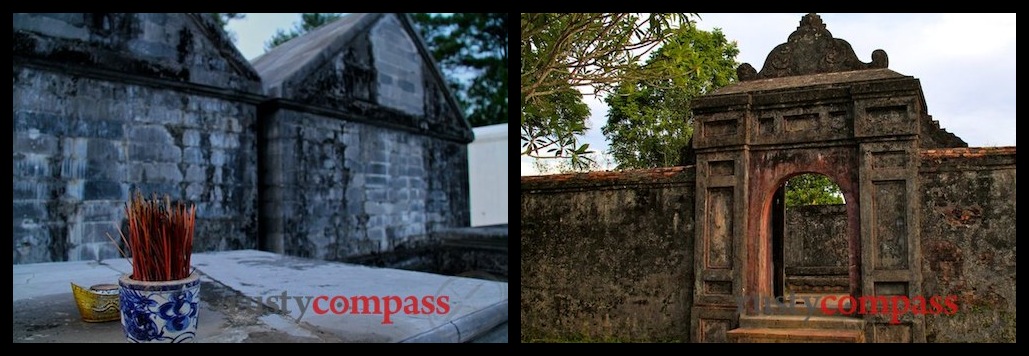
Photo: Mark BowyerA King lieth here. Gia Long's Tomb
But the grounds and setting are impressive. And his sarcophagus remains too.
The 18km journey from the centre of town is a highlight and can done as an interesting cycling ride (you'll need good bikes).
2. Hue's Churches and Pagodas
Catholics might only be a small minority in Vietnam, but they've punched above their weight in the country's modern history - especially here in Hue. The two disgraced long serving presidents of South Vietnam, Ngo Dinh Diem and Nguyen Van Thieu were both Catholics.
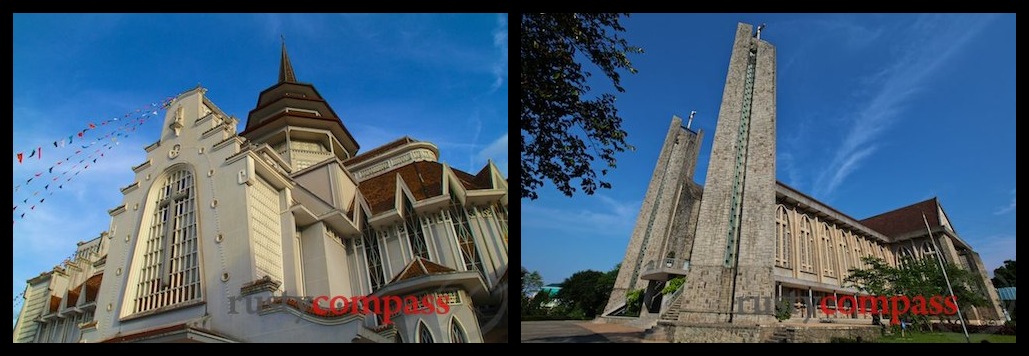
Photo: Mark BowyerHue's churches
So where does Hue fit in?
Ngo Dinh Diem was born in Hue and his family dominated both political and church life from the city. His brother, Ngo Dinh Thuc was Archbishop of Hue. It was his hostility towards local Buddhists that provoked what became known as the Buddhist crisis that centred around Hue's pagodas before moving south to Saigon.
Archbishop Thuc's hostility to Buddhists played on the streets of Hue via his brother, Ngo Dinh Can, the repressive governor of the region and another member of the Ngo clan.
Hue's Phu Cam Cathedral, a remarkable modernist church by architect Ngo Viet Thu, was the spiritual centre of the Ngo family's Catholic rule. This was the church of Archbishop Ngo Dinh Thuc.

Photo: Mark Bowyer Phu Cam Cathedral, Hue
The Buddhist crisis led to a collapse in US support for the Diem regime and a bloody coup that wiped out the President two of his brothers. Only the Archbishop survived. He was outside Vietnam during the 1963 coup and never returned. He died in the US in 1980. The coup also presaged a deeper US involvement in Vietnam.
3. An Dinh Palace and Tu Cung Residence
These two forlorn buildings perfectly mark the demise of the Nguyen Dynasty and the borderline contempt that the country's current fathers have for it.
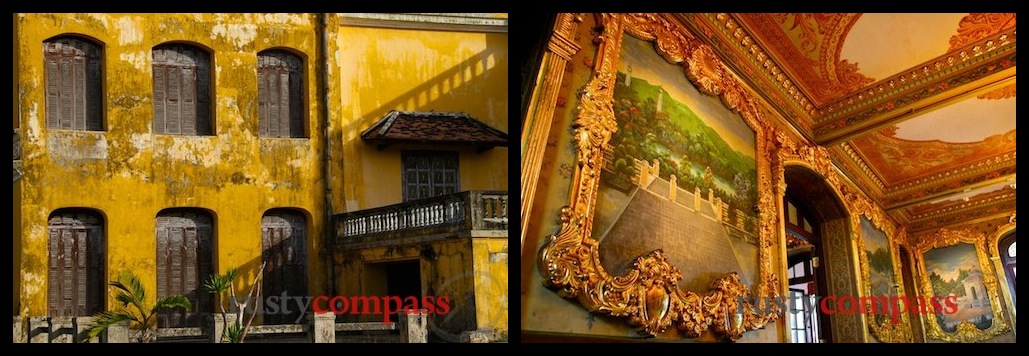
Photo: Mark BowyerAn Dinh Palace, Hue
Both were left for ruin after 1975.
An Dinh Palace was built by Emperor Khai Dinh and lived in by his wife Queen Tu Cung, the last King Bao Dai and his wife Nam Phuong. It's had some recent rehabilitation thanks to German Government assistance.
Just down the road, Tu Cung Residence can't have changed much since the the passing of Tu Cung in 1980. While most of the former royal brass fled Hue, the wife of Khai Dinh and mother Bao Dai refused to. She stayed on during the Tet Offensive's Battle of Hue in 1968 and the approach of Communist forces in 1975. She was the last Nguyen Dynasty holdout and her residence, with its altars, family photos and a few pieces of furniture, perfectly captures the eery inglorious end of a dynasty.
4. Hue National School (Quoc Hoc).
Hue's National School from French colonial times, educated some of the main players from both sides of Vietnam's turbulent twentieth century history.
It proudly remembers some of its alumni - Ho Chi Minh, Vo Nguyen Giap, Pham Van Dong, Le Duan among others. It's less voluble in remembering its founder, Ngo Dinh Kha, or his son, former South Vietnamese President Ngo Dinh Diem who also attended the school.
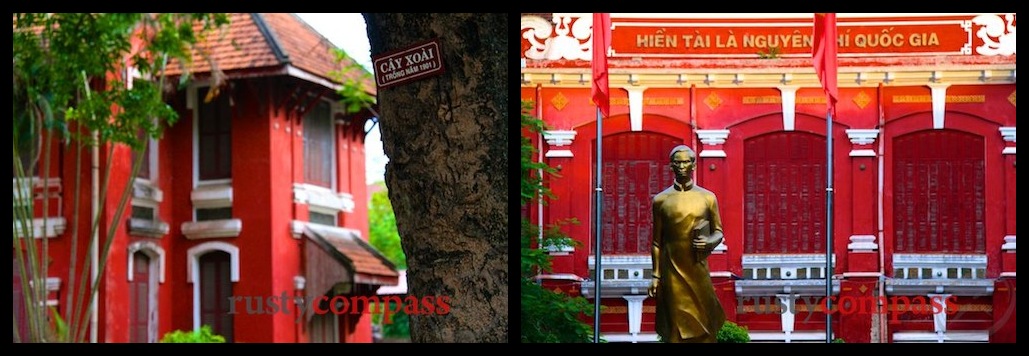
Photo: Mark BowyerNational School Hue
In addition to its remarkable list of past students, Quoc Hoc is a distinct crimson French colonial building in delightful green grounds. Visitors can wander the grounds when school is out - late afternoons, holidays or weekends.
5. Bach Dang St and Dieu De Pagoda
Take a walk from Dong Ba Market along the canal and Bach Dang St. There are some lovely old shophouses and Dieu De Pagoda - one of the country's National Pagodas in royal times. In 1963 Dieu De erupted in violence as the police of President Ngo Dinh Diem sought to crush Buddhists protesting the discriminatory policies advocated by his brother Archbishop of Hue, Ngo Dinh Thuc and implemented by his other brother, local leader, Ngo Dinh Can. Both Diem and Can were soon to pay the ultimate price for their brutality. And the US escalation in Vietnam began.

Photo: Mark BowyerBach Dang St, Hue
Cross the canal and take a walk along the outer walls of the citadel. Wander along to 112 Mac Thuc Loan St to the home where Ho Chi Minh lived as a child.
6. Thien Mu Pagoda
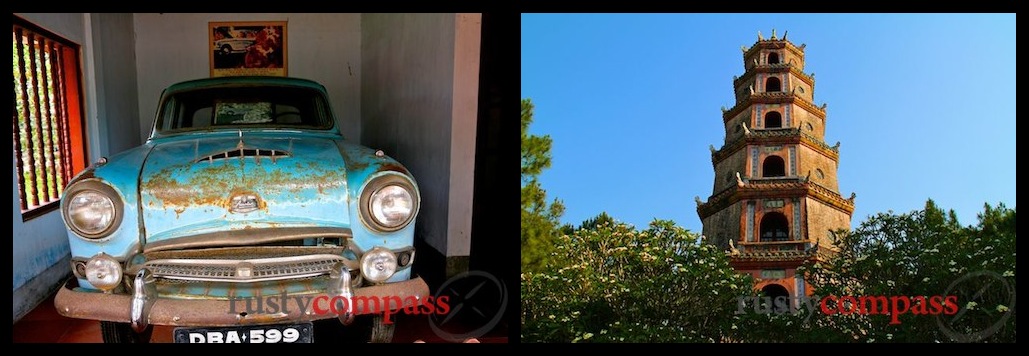
Photo: Mark BowyerThien Mu Pagoda, Hue
This one usually makes it onto the standard Hue tour itinerary. It's a beautiful pagoda with a lovely vista across the Perfume River. Thien Mu's also home to the car driven by Monk Thich Quang Duc to his self immolation in Saigon in June 1963. It was a decisive moment in the international disgracing of the regime of President Ngo Dinh Diem and his ultimate downfall. Malcolm Browne's photo - including the car - is one of the most iconic images from the war.
7. Ngo Dinh Can's abandoned residence
The abandoned modernist mansion of tyrannical Hue strongman Ngo Dinh Can is located in hills not far from downtown Hue. It's as close to a haunted house that you will find in Vietnam. Can, the youngest of the Ngo brothers ruled central Vietnam like a crime boss. He was a key figure in Buddhist crisis of 1963. His decaying former residence is marked as a historical vestige, as are the old French bunkers nearby, used as cells of torture during Can’s despotic rule.
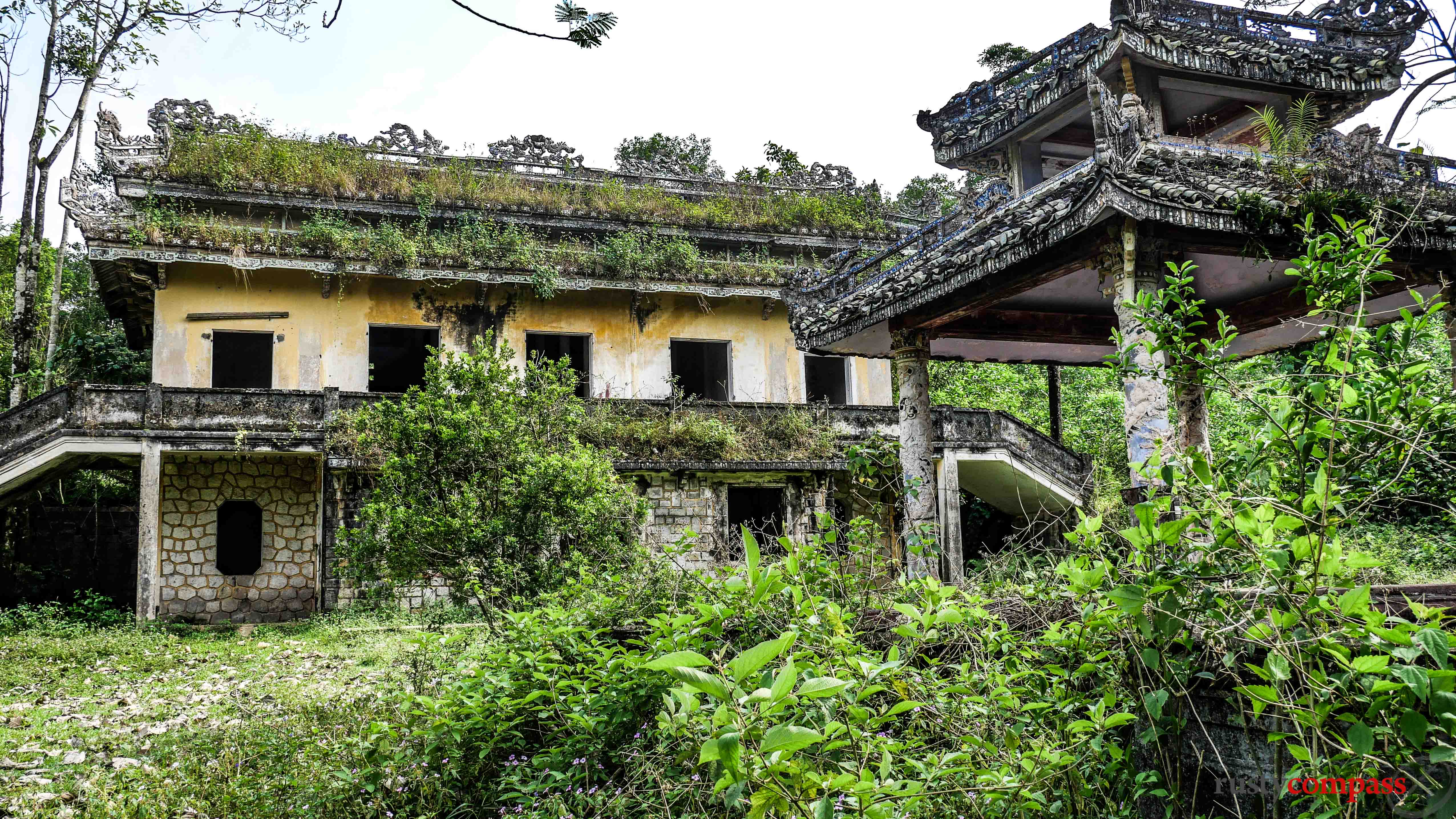
Photo: Mark Bowyer Ngo Dinh Can's spooky abandoned mansion - Hue
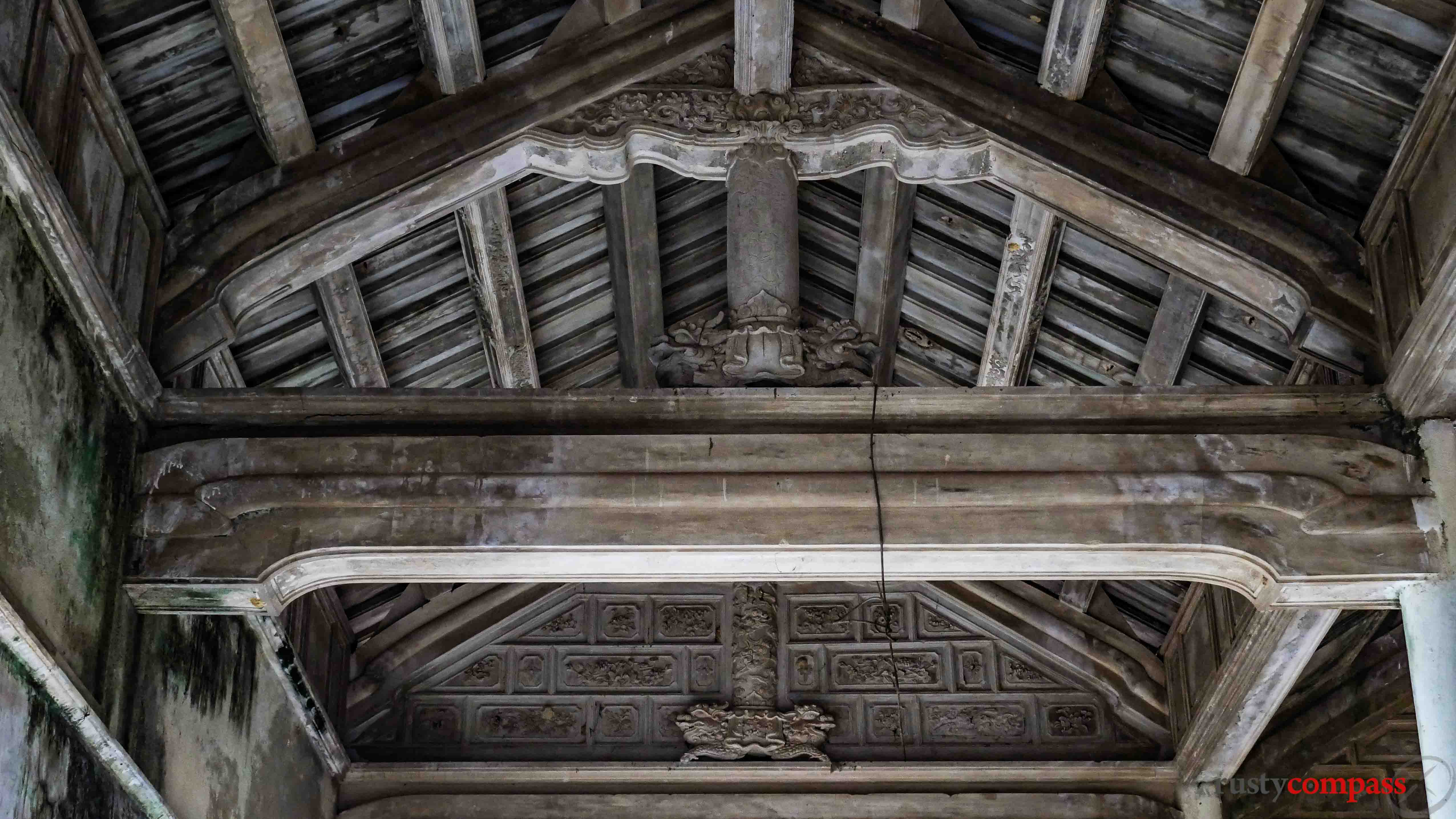
Photo: Mark Bowyer Roof detail a glimpse of the fomer opulence of tyrant Ngo Dinh Can's residence.
Ngo Dinh Can is the least known but the most barbaric of the Ngo family that dominated all of South Vietnam from 1955 till 1963 through President Ngo Dinh Diem. Can’s ruthless response to Buddhist protests resulted in a nationwide uprising that ended with the execution of his two brothers Ngo Dinh Diem and Ngo Dinh Nhu, in the US-sanctioned coup of November 1963. That coup is considered to have been decisive in the long US entanglement in Vietnam - so Can is of great historical consequence.
Ngo Dinh Can was executed for his crimes by firing squad a few months later in May 1964. He unsuccessfully sought the protection of his family's great ally, the United States. But relations had soured and Can was handed over to South Vietnamese officials.
Can’s cruelty went on for years before the Buddhist crisis - and attracted little concern from the US government. An earlier effort to rein in the Ngo family bararity might have averted the crisis of 1963. Can's criminal rule of central Vietnam fought communists, other political opponents and the enemies of his criminal reign with impunity.
A visit to his abandoned modernist mansion is a chilling experience. There always seem to be dogs howling there. I have never seen anyone there. The intricate roof carvings and the rotunda in the overgrown garden are the reminders of a once palatial home.
A little further beyond the mansion are the old French bunkers used by Can for the incarceration and torture his enemies.
This is a grim place that even Vietnamese seem to stay well away from.

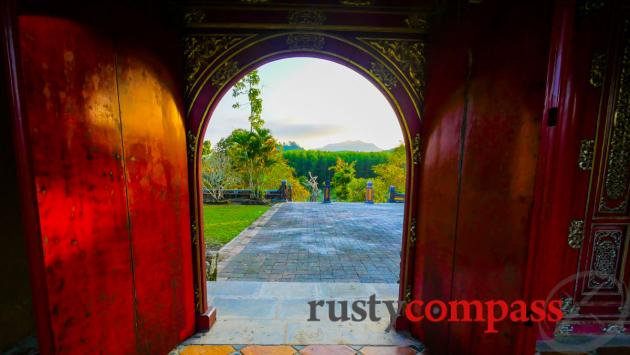
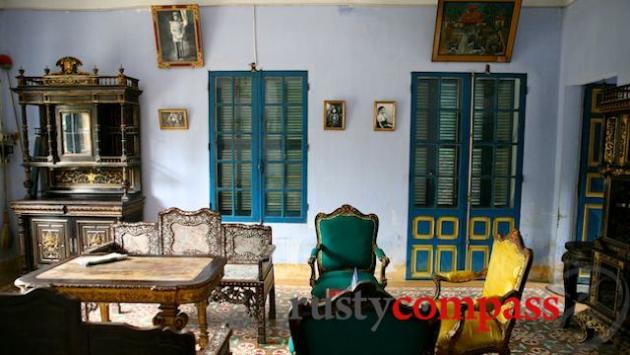
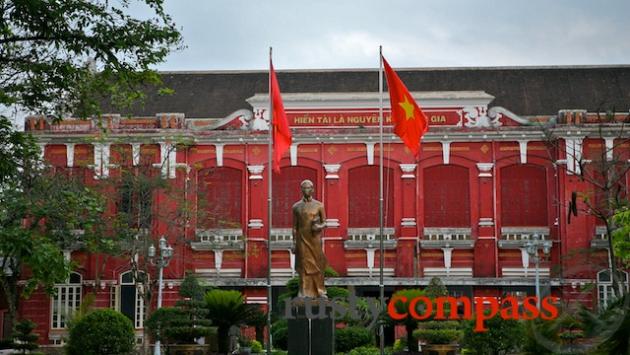
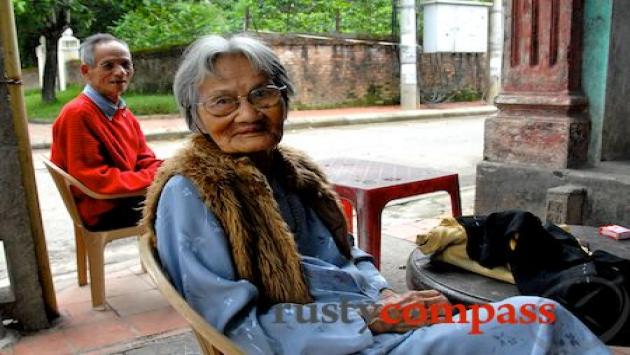
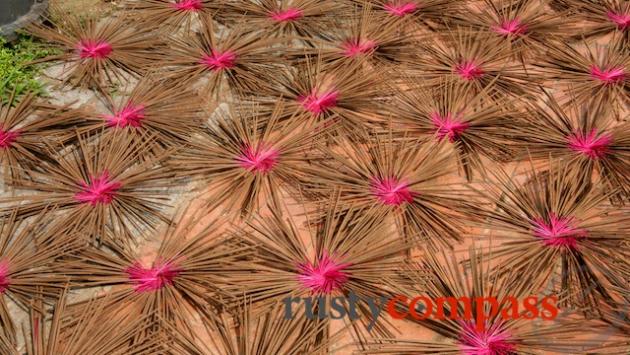
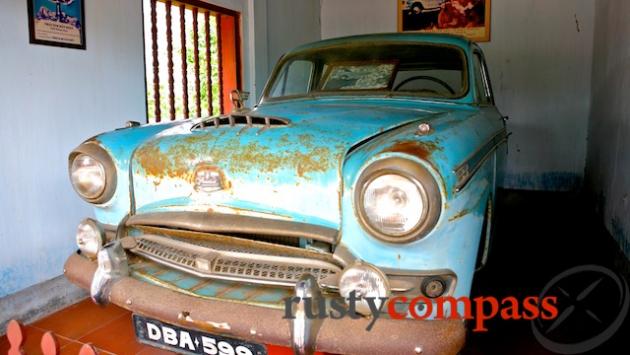
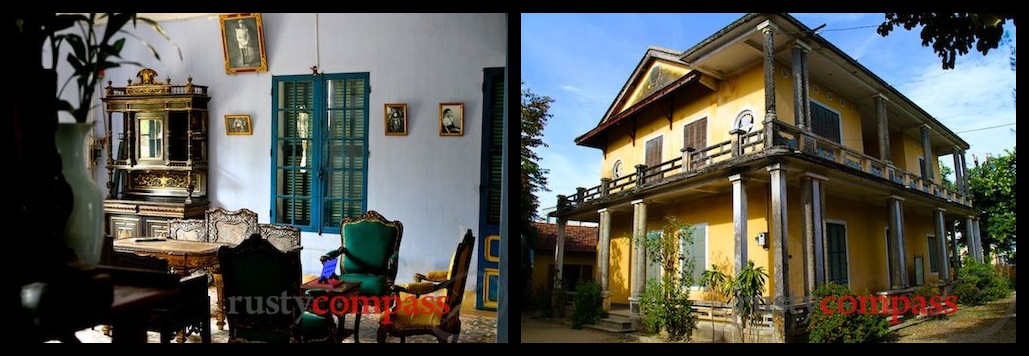







There are no comments yet.